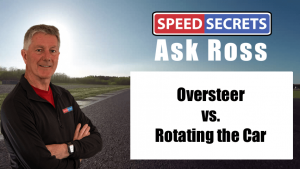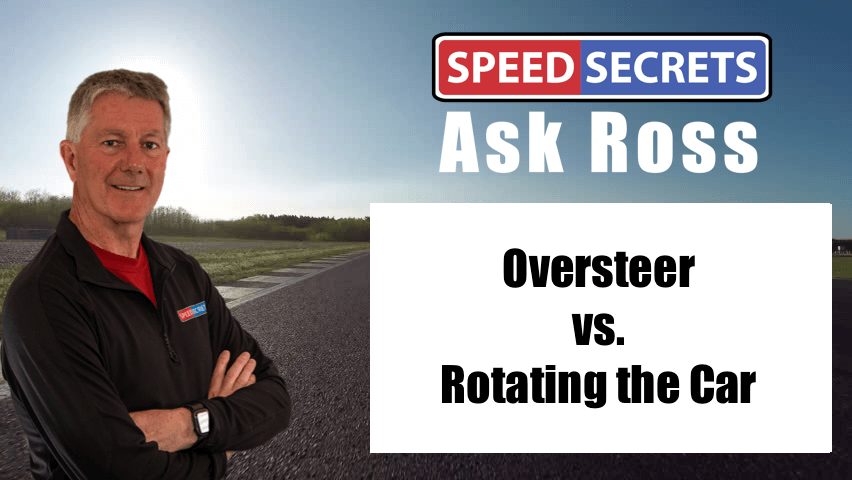Q: “What’s the difference between oversteer and rotating the car?”
A: Rotating the car is what you, the driver, do to the car. Oversteer is what the car is doing to you.
That’s one simple way of thinking about the difference. Yes, rotating the car involves oversteer – the rear tires have more slip angle than the fronts, so there is a small amount of oversteer. The difference is that it’s deliberate, and is caused by the timing and rate of release of the brakes, and how and where you turn the steering when entering a corner. You’re intentionally making the car oversteer just a little bit to help the car change direction.
Oversteer is typically a result of the car’s setup – a combination of suspension geometry and alignment; springs, dampers, anti-roll bars, and ride heights; tires, and their pressures and temperatures; as well as aerodynamics. For sure, the driver plays a role in how much a car oversteers, if at all, but the setup will dictate the basic handling characteristics.
Obviously, if a car tends to oversteer due to the setup, it’s easier to induce more rotation, too. But a driver can make a car that understeers rotate.
I do want to make one thing clear, here: rotating the car does mean there is a small amount of oversteer, but it’s a small amount. Unless you’re drifting, rallying, or possibly dealing with a tight turn on an autocross course, rotating the car means there is a slight amount of oversteer, and not sliding it sideways through a corner!

